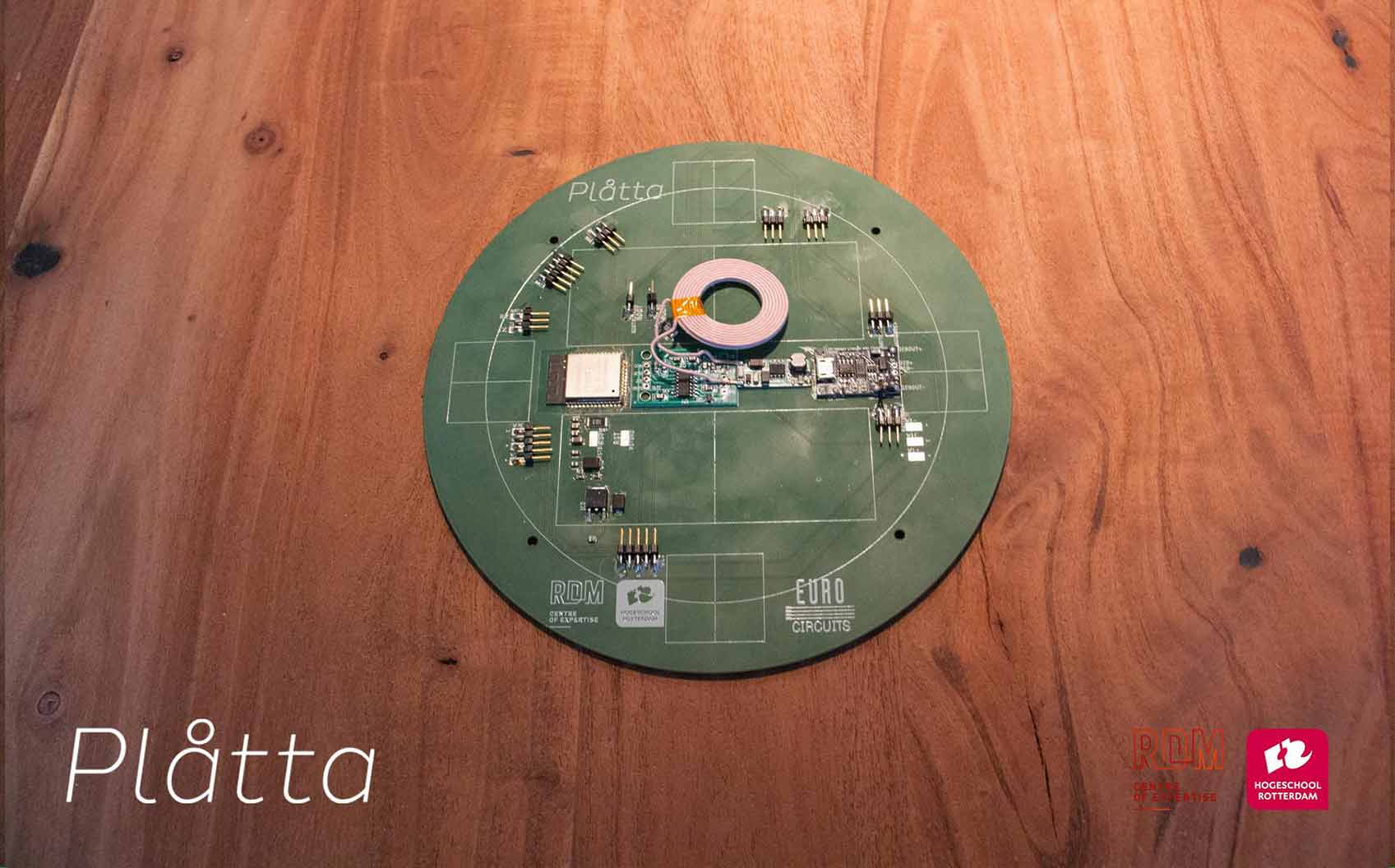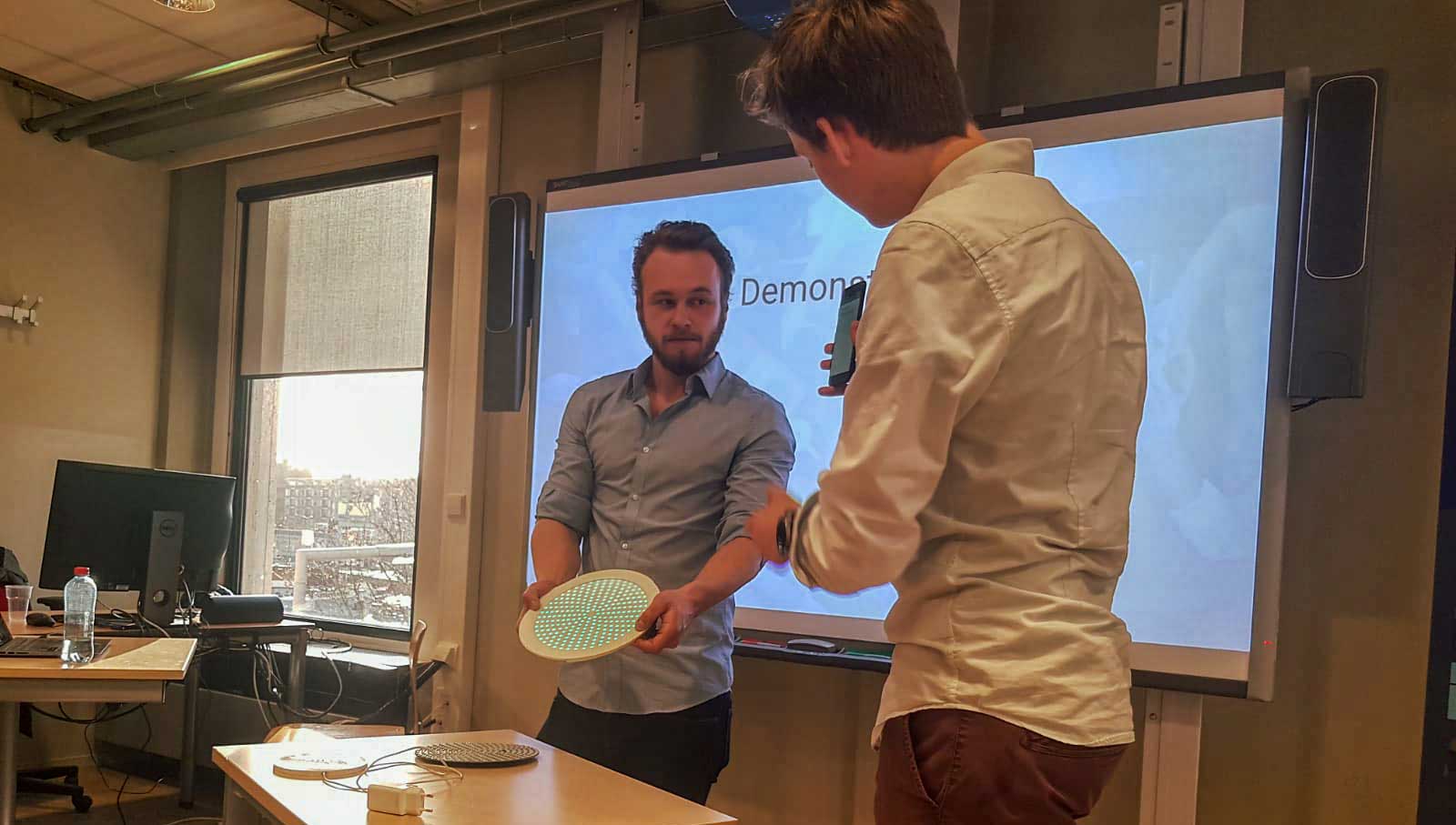
Plåtta
The Project
During our minor SmartThings at the Rotterdam University of applied sciences we got the task to create our own smart device. The goal of the smart thing was to solve a simple everyday issue that most people have.
A lot of people struggle monitoring and maintaining their diet.
This leads to several health issues and in more extreme cases obesity. Scientific research has shown that eating habits are related to the psychical properties of the plate that one eats from.
We decided to mimic the psychical properties of a plate and this is how the Plåtta was born.
The Plåtta is a plate which creates an optical illusion for the user. It gives the perception of a meal being bigger than it actually is, which helps the user feel more satisfied after a meal.
To accomplish this there needs to be a colour contrast between the plate and the actual food. This is done by large amount of LED’s driven by a microcontroller underneath the eating portion of the plate.
Furthermore, the plate will automatically weigh out your food for you so tracking your calorie intake becomes even easier.
We wanted to further trick the user by making our product look like an actual plate. To achieve this we had to cram a bunch of components into a small chassis.
This means that a prototype board is out of the question. After a couple of conversations with the experts over at the Havenlab on RDM Campus we decided to develop our own PCB and were glad we could get this sponsored by Eurocircuits.
The PCB board is a two sided board. Each side dedicated tasks.
The upper side of the board houses all of the lights and distributes the power. We had decided to use WS2812Bs, more commonly known as Neopixels.
These leds operate with their signal lines in series which means that one faulty signal line could mean that a big percentage of our plate wouldn’t light up.
The backside of the plate houses all of the other components; solder terminal for the batteries, a TP4056 which manages the aforementioned batteries, a Qi Wireless charger receiver, a load cell balancer and last but not least an ESP32.
The ESP32 is a powerful little microcontroller with built in features such as wake up on touch and Bluetooth Low Energy.
This component acts like the brain of our Plåtta.
Our project was time boxed in 10 weeks so we had to move fast.
Our multidisciplinary team unfortunately did not have anyone who was experienced with building PCBs. But we got advice from the expert at the Havenlab.
We used Eagle to design our PCB and the design rule files Eurocircuits provide for this program, made the process a lot easier.
The short factory time at Eurocircuits helped us to us successfully finishing off our first prototype just in time for the presentations.
For assembly the RDM: Centre of expertise in Rotterdam supplied us with tools and an expert dedicated to give advice on our project.
Since this is our first time making our own PCBs we made quite some mistakes during the assembly.
Thanks to Eurocircuits
With Eurocircuits we had the confidence that we could replace multiple components without tearing any traces or loosening any pads.
We would like to thank Eurocircuits and the experts at the RDM: Centre of Expertise for their time and their support!
Without them it simply wouldn’t have been possible to make our ambitious project a reality.
A little side-note is that at the end of the minor we had a Dragons Den with three experienced dragons from the IT-field in Rotterdam.
We ended up getting first place with the Plåtta; your mate in weight.
Kind Regards,
Team Plåtta








